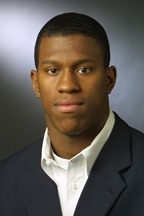 SEATTLE—By day, the historic Pioneer Square district is a vibrant cross-section of art galleries, toy shops and high-end restaurants that attract shoppers and tourists from around the world.
SEATTLE—By day, the historic Pioneer Square district is a vibrant cross-section of art galleries, toy shops and high-end restaurants that attract shoppers and tourists from around the world.
By night, it can reveal a not-so-chichi alter ego.
Last month's attack on a Seattle Seahawks player near a popular night club recently prompted the team's coach to bar his players from the area, even though it's just blocks from their home field.
"It's a place that probably has more diversity, in terms of both an economic and an ethnic sense, than any other neighborhood" in the city, said Peter Aaron, owner of the independent Elliott Bay Book Co.
The 35-year-old bookstore — a place where you're more likely to be shushed than shoved — shares block space with bars and hip-hop nightclubs that have a sometimes rougher mix of characters.
As daylight dwindles, body-thumping bass spills out into the night air and the area morphs into another creature.
On a recent Saturday night, free admission and cheap drinks boosted the crowd at Larry's Nightclub. Seattle Seahawks safety Ken Hamlin was severely beaten in a fight outside the club on Oct. 17. The bar was a favorite haunt for some of the team's players, but the Hamlin incident, along with an unrelated fight nearby a few weeks earlier, prompted coach Mike Holmgren to issue his edict.
"I mainly want the guys to think about where they go," Holmgren said. "It's an organizational guideline and I presented it to the players. I think common sense plays a role."
The spate of violence hasn't stopped crowds from gathering inside Larry's.
Music from Kanye West, the Black Eyed Peas and Chris Brown pull customers onto the dance floor as the DJ gives a shout out to go-go dancers on tables along the walls. Wearing pink or blue tinsel-like wigs, clunky black boots and more makeup than clothes, they're a visual draw for those not already occupied with a partner.
If you're not dancing or drinking, there's little interest in conversation, especially with a reporter.
Larry's and other nearby bars have drawn neighbors' ire because of after-bar fights, reports of underage drinking and fire-code violations.
Owner Larry Culp says his club is being unfairly targeted because he caters primarily to Blacks.
"It's a cultural issue here," said Culp, who has owned the bar since 1986.
To try and keep the peace, Culp employs at least seven security guards in and around the bar. On Saturday, some calmly escorted several people out of the nightclub.
Culp has also tried rolling closures, cutting off music and alcohol early and now is considering increasing lighting around the area.
"My response to any and all accusations is to try and do the right thing," he said.
However, residents worry newspaper headlines about the disturbances are feeding the public's negative image of Pioneer Square as an unsafe area.
"I think it creates a perception that is not at all accurate and probably makes people think twice about coming into the neighborhood at any time of day or night," Aaron says. "Based on what I've read, I wouldn't come down here at two o'clock in the morning."
Pioneer Square's Jekyll-and-Hyde nature is nothing new to the city.
Settled in 1852, the neighborhood was the nation's first Skid Row, so named for the logs that slid down toward the docks, and has always attracted people from both sides of the economic divide.
Early on, timber, salmon and coal helped build the economy and the district prospered and development soared.
In the 20th century, after sawmills were gone and downtown businesses moved north, the down-and-out urban area was frequented by street drunks and transients.
"The district has been schizophrenic since the late 1960s," said Walt Crowley, a Seattle historian and director of HistoryLink.org, a state historical Web site.
Buildings were restored after the Pioneer Square Historic District was established around 1970 and the neighborhood was transformed with music clubs, loft apartments and upscale taverns.
The Kingdome, built in 1976, periodically flooded the district with tens of thousands of sometimes rowdy baseball and football fans. The Dome's gone, but fans still flock to the stadiums that replaced it.
The most serious incident in the area's modern incarnation came in 2001, when Mardi Gras celebrations turned violent. Several thousand revelers jammed the streets, fighting, throwing beer bottles and smashing windows as police stood by. A 20-year-old man was killed by a blindside punch as he tried to help a woman who had fallen.
Worried that the district may again be disintegrating, community leaders and local law enforcement hope to put more of a nighttime shine on the neighborhood.
This past week, Mayor Greg Nickels responded to the Hamlin assault by calling for a task force of club owners, residents and business owners and an ongoing assessment program of nightclubs throughout the city.
"A vibrant night life shouldn't mean a violent night life," Nickels said.
— The Associated Press
- Home
- News
- Opinion
- Entertainment
- Classified
- About Us
 MLK Breakfast
MLK Breakfast- Community
- Foundation
- Obituaries
- Donate
04-26-2024 11:37 pm • PDX and SEA Weather






















































































































































































































































































































